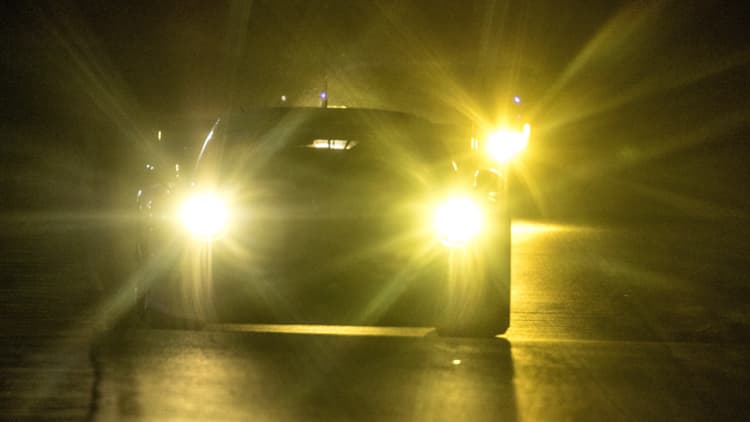
It takes a special type of crazy to drive more than 3,000 miles in a single day. But since 1923, that's exactly what teams have done at France's annual 24 Hours of Le Mans endurance race.
It's the oldest still-active auto competition of its kind. When it kicks off this weekend, 60 teams of three drivers will cover nearly 3,300 miles — roughly the same distance from Seattle to the southern tip of mainland Florida — testing the limits of science and sanity.
All day. All night. Man versus machine.
Despite the physical and technological challenges, the race format is fairly simple: Drive a car for 24 hours and complete as many laps as possible.
The famed Circuit de la Sarthe — a combination of permanent track connected to public streets — is roughly 8.5 miles long. The 2015 winners went around it 395 times, marking the second-most laps in the race's history. That year, the drivers were behind the wheel of a high-tech, prototype Porsche, going an average speed of 140 miles per hour.
This Saturday, at the start of the 84th running, the same three men won't be defending their title as a team. Porsche, however, will be defending its spot at the top of the podium. That's because for manufacturers, Le Mans is all about reputation.
Back in the early automotive days, when humans could easily outlast their cars, automakers looked at this event as a way to earn bragging rights. They still do. Just ask the Germans.
Over the past 20 years, 18 German-manufactured cars have won. Of those winners, 13 were Audi. The country's domination began in earnest in the mid-1970s. Before that, victories were largely celebrated by French, Italian and British automakers. However, there was a brief period in the 1960s when Ford was the car to beat. In fact, starting in 1966, the American company won Le Mans four years in a row. Afterward, the automaker stopped competing altogether.
Now, 50 years since that first historic victory, Ford is making its triumphant return to Le Mans. And picking up where it left off, one of its cars qualified for the pole position — that is, in its class. It's Porsche that has the overall No.1 car at the start. Still, who really has the early bragging rights going into this year's race? Just ask the Germans.
Each week, Jay Leno shares his thoughts about hot topics in the auto industry. Tune in to "Jay Leno's Garage" Wednesdays at 10 p.m. ET/PT on CNBC.

